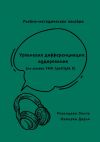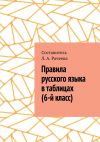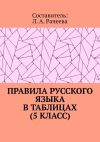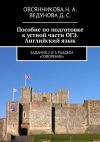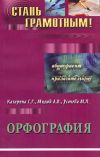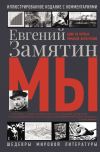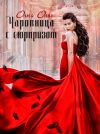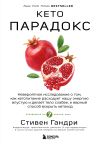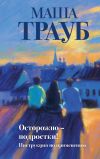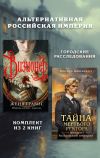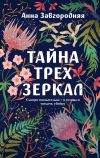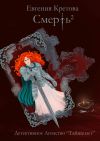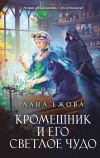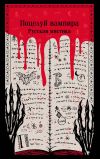Текст книги "ЕГЭ. Английский язык. Устная часть. Тренировочные тесты"

Автор книги: Д. Колоян
Жанр: Педагогика, Наука и Образование
Возрастные ограничения: +12
сообщить о неприемлемом содержимом
Текущая страница: 1 (всего у книги 3 страниц) [доступный отрывок для чтения: 1 страниц]
Е. В. Власова, Д. Л. Колоян
ЕГЭ. Английский язык. Устная часть. Тренировочные тесты
© Власова Е. В., Колоян Д. Л., 2016
* * *
Предисловие
Основная цель пособия «ЕГЭ. Английский язык. Устная часть» – подготовка учащихся к сдаче устной части ЕГЭ по английскому языку. Оно также может быть использовано на занятиях в классе и при подготовке учащихся к зачету, экзамену или олимпиаде. Данное учебное пособие является дополнительным компонентом к учебно-методическим комплектам по английскому языку.
Пособие состоит из двух частей. Первая часть содержит инструкцию по выполнению раздела «Устная часть» и рекомендации к выполнению четырех типов заданий.
Во второй части предлагаются учебно-тренировочные тесты в формате ЕГЭ.
Желаем удачи!
Часть I. Инструкция по выполнению заданий
Раздел «Устная часть» включает в себя четыре типа заданий:
Задание С3 – чтение вслух небольшого научно-популярного стилистически нейтрального текста – 1 балл;
Задание С4 – задать пять вопросов для получения необходимой информации на основе ключевых слов – 5 баллов;
Задание С5 – описание одной из трех предложенных фотографий по выбору учащегося с опорой на план высказывания – 7 баллов;
Задание С6 – сравнить две фотографии и обосновать свое отношение к предложенной проблеме на основе плана – 7 баллов.
Общее время ответа на одного экзаменуемого (включая время на подготовку) – 15 минут. Каждое последующее задание выдается после окончания выполнения предыдущего.
Все ответы учащегося записываются на цифровой носитель и ведется видеозапись.
При ответе экзаменуемый должен выполнить поставленные задачи, говорить четко и ясно, не отходить от темы и следовать предложенному плану ответа. Так Вы сможете набрать наибольшее количество баллов.
Рекомендации к выполнению заданий С3
В первом задании устной части учащимся предлагается прочитать вслух небольшой отрывок из научно-популярного стилистически нейтрального текста. Для подготовки отводится 1,5 мин. После этого экзаменуемый читает текст вслух, а его ответ записывается на компьютере. Время чтения – 1,5 мин.
Экзаменуемому необходимо понять основное содержание читаемого текста, разбить его на смысловые группы и фонетически правильно прочитать. Обращайте внимание на интонацию.
Критерии оценивания выполнения заданий С3. Чтение текста вслух – максимум 1 балл

Рекомендации к выполнению заданий С4
Во втором задании учащимся предлагается ознакомиться с рекламным объявлением и запросить необходимую информацию, имитируя диалог по телефону. В качестве опоры предлагается план с ключевыми словами, в соответствии с которыми необходимо задать пять вопросов. Для подготовки отводится 1–1,5 мин. Время говорения – 1 минута.
Учащийся должен точно и правильно употреблять языковые средства оформления диалогического высказывания. Рекомендуется начать разговор так, как бы Вы начали его в реальной ситуации. Необходимо правильно задавать вопросы и вежливо завершить диалог.
Критерии оценивания выполнения заданий С4. 5 вопросов для получения необходимой информации. Оценивается отдельно каждый из пяти задаваемых вопросов (максимум – 5 баллов)

Рекомендации к выполнению заданий С5
В третьем задании экзаменуемому предлагается три фотографии, из которых следует выбрать одну и описать ее в соответствии с предложенным планом, а также обосновать свой выбор. Для подготовки отводится 1,5 мин. Время говорения – 2 мин.
Учащийся должен логично и связанно строить ответ, следуя предложенному плану. Рекомендуется сделать вступление, используя формулировку задания; дать развернутые ответы на каждый пункт плана; высказать свои эмоции и чувства и сделать заключение для логического завершения монологического высказывания.
Критерии оценивания выполнения заданий С5. Описание фотографии (максимум – 7 баллов)[1]1
* Примечание. При получении экзаменуемым 0 баллов по критерию «Решение коммуникативной задачи» все задание оценивается в 0 баллов.
[Закрыть]


Рекомендации к выполнению заданий С6
В четвертом задании учащемуся предлагается описать и сравнить две фотографии, указав на их сходство и различие, а также выразить свое отношение к тому, что изображено на фотографиях с опорой на предложенный план. Для подготовки отводится 2 мин. Время говорения – 2 мин.
Экзаменуемый должен определить тематику картинок; выявить не менее двух отличий и двух общих характеристик. Рекомендуется сделать небольшое вступление, используя формулировку задания; дать развернутые ответы на каждый пункт плана и сделать заключение для логичного завершения рассказа.
Критерии оценивания выполнения заданий С6. Сравнение фотографий (максимум – 7 баллов)[2]2
* Примечание. При получении экзаменуемым 0 баллов по критерию «Решение коммуникативной задачи» все задание оценивается в 0 баллов.
[Закрыть]


Часть II. Учебно-тренировочные тесты в формате ЕГЭ
Задание С3
C3
Imagine that you are preparing a project with your friend. You have found some interesting material for the presentation and you want to read this text to your friend. You have 1,5 minutes to read this text silently; then be ready to read it out aloud. You will have no more than 1,5 minutes to read it.
1. The construction has been estimated more than thirty million hours of labors. As mysterious as old, it has long puzzled archaeologists; no one knows why it was constructed, although it’s believed to have been started about 3100 B. C. and spanning several centuries.
Stonehenge is a medieval term meaning “hanging stones”. Multi-ton stones were brought to Salisbury Plain from great distances. Experts speculate that stone could have been put on rafts, transported by water and dragged on rollers. Maybe 500 men, aided by ropes pulled one of these stones. Researchers suggested that Stonehenge was used as a place of worship, even as a location for human sacrifice, other consider that the stone formations were used as an observatory to predict the sun and moon’s position to the earth and determinate the seasons.
Today only half of the original monument survives, because over the centuries, people have taken pieces of the stone for building materials and souvenirs, however Stonehenge is a popular tourist destination. Although new research suggests that Stonehenge was originally used as a cemetery, Mike Parker Pearson of the University of Sheffield, UK argues that Stonehenge was primarily a place for the dead, and must be treated as part of a greater complex of monuments in the surrounding area.
C3
Imagine that you are preparing a project with your friend. You have found some interesting material for the presentation and you want to read this text to your friend. You have 1,5 minutes to read this text silently; then be ready to read it out aloud. You will have no more than 1,5 minutes to read it.
2. London Eye, the giant observation wheel has become a London icon since it was opened on the South Bank in 2000. It is located next to Jubilee Gardens and County Hall. With unparalleled views of London, the Millennium Wheel has proved a major tourist attraction, but it was a controversial addition to the city’s skyline.
More than 15 million people have travelled in the giant wheel. With its 135m high, it has 32 glass capsules attached to its external circumference which holds 25 people each of one. In addition it provides 30 minute of slow-moving “flight” over London. This attraction built by the British Airways began like part of city celebrations for the arrival of the New Millennium. For its construction, a floating crane was installed in eight platforms to raise the gigantic hoop of the wheel.
The most of their occupants are tourists, but there are pairs whom rent for special occasions like Valentine’s Day, when also chocolates and champagne are offered. In spite of the initial critics of those who considered that the wheel goes off key with its classic environs, the initial license by five years already was extended by two decades more. London Eye heads the list of ten more popular private monuments in the city.
C3
Imagine that you are preparing a project with your friend. You have found some interesting material for the presentation and you want to read this text to your friend. You have 1,5 minutes to read this text silently; then be ready to read it out aloud. You will have no more than 1,5 minutes to read it.
3. Buckingham Palace is one of the few working royal palaces remaining in the world today. It serves as both the office and London residence of the Queen and also as the busy administrative headquarters of the monarchy. Probably it has the most famous and recognizable facade of any building in the world. It is the venue for great Royal ceremonies, State Visits and Investitures, all of which are organized by the Royal Household.
During summer, visitors can take a tour around the nineteen State Rooms, which are decorated with some of the greatest treasures from the Royal Collection, which includes paintings by Rembrandt, Rubens, Vermeer, Poussin, Canaletto and Claude; sculpture by Canova and Chantrey, exquisite examples of Sevres porcelain, and some of the finest English and French furniture in the world.
The Changing of the Guard takes place at the front of the Palace. During the summer it is one of the popular events for visitors, occurs at 11:30 every day. Since 1660, Household Troops have guarded the Sovereign and the Royal Palaces. The Queen’s Guard usually consists of Foot Guards in full-dress uniform of red tunics and bearskins.
C3
Imagine that you are preparing a project with your friend. You have found some interesting material for the presentation and you want to read this text to your friend. You have 1,5 minutes to read this text silently; then be ready to read it out aloud. You will have no more than 1,5 minutes to read it.
4. Windsor Castle is one of the official residences of the British Monarch along with Buckingham Palace in London and Holyrood Palace in Edinburgh. It is located in the English county of Berkshire and is the largest inhabited castle in the world. Queen Elizabeth II spends many weekends at the castle, using it for both state and private entertaining. You can see the Royal Standard flying on the top of the Round Tower when the Queen is living in the castle; there are four quarters on it, three lions represent England and Wales, the single lion to Scotland and the harp to Ireland; when the Queen is not there, the Union Jack is flown.
Throughout history of the castle, Kings and Queens of England, Great Britain and even Commonwealth realms have had a direct influence on the construction and evolution of Windsor Castle. Today Windsor Castle remains a working palace and the Queen’s official residence. Some of the finest artwork, armour and paintings in the world are in the State Apartments. Also there are masterpieces by Rembrandt, Rubens, Holbein and Van Dyck as well as magnificent French and English furniture and porcelain. Those areas which were damaged by fire in November 1992 have been beautifully restored by some finest British craftsmen.
C3
Imagine that you are preparing a project with your friend. You have found some interesting material for the presentation and you want to read this text to your friend. You have 1,5 minutes to read this text silently; then be ready to read it out aloud. You will have no more than 1,5 minutes to read it.
5. Eden Project is located in a Kaolinite pit, 2km from the town of St. Blazey and 5 km from the larger town of St Austell, Cornwall, United Kingdom. Dubbed like the “Eighth wonder of the World”, the area is a dramatic global garden housed in tropical biomes nestles in a crater of 30 football pitches size.
The attraction includes the world’s largest greenhouse and is considered one of the UK’s top Landmark Millennium projects created to tell the fascinating story of man’s relationships with plants. It is a non-profit making charitable scientific organization for the 21st century with a commitment to communicate with the public through entertainment, education and involvement.
This Living Theatre of Plants and People is a vibrant reminder of our place in nature and is a living demonstration of regeneration. The team transformed a clay pit into a stunning lost world reminding us that if we propose something we can do it. A number of domes house plant species from around the world, each of one emulating a natural biome. Three domes are made out of hundreds of hexagons plus a few pentagons that interconnect the whole construction together. The first dome emulates a tropical environment, the second a warm temperate and finally the third emulates a Mediterranean environment.
C3
Imagine that you are preparing a project with your friend. You have found some interesting material for the presentation and you want to read this text to your friend. You have 1,5 minutes to read this text silently; then be ready to read it out aloud. You will have no more than 1,5 minutes to read it.
6. The Leaning Tower of Pisa is the third structure by time in the Cathedral Square and is situated behind the Cathedral. The tower presently leans to the southwest at an angle of 3.97 degrees. At the beginning it intended to stand vertically but was impossible due to a poorly laid foundation and loose substrate that has allowed the foundation to shift direction. Two different masses of cannon balls dropped of the tower to demonstrate that their descending speed was independent of their mass. So it’s considered an apocryphal tale because the only source for it comes from Galileo’s secretary.
A work of art that performed in three stages during 177 years, the construction of the first floor of the white marble campanile began on 1173, and is surrounded by pillars, classical capitals, leaning against blind arches. In 1178 the tower began to sink after construction of the third floor, the cause was a mere three-meter foundation, set in weak, unstable subsoil. Later the construction was subsequently halted for almost a century, the Pisans still engaged in battles with Genoa, Lucca and Florence, which allowed to the underlying soil to settle. In 1198 temporarily clock was installed on the third floor of the unfinished construction.
C3
Imagine that you are preparing a project with your friend. You have found some interesting material for the presentation and you want to read this text to your friend. You have 1,5 minutes to read this text silently; then be ready to read it out aloud. You will have no more than 1,5 minutes to read it.
7. Blenheim Palace, a large and monumental country house, is situated in Woodstock, Oxfordshire, England. It is one of England’s largest houses and it was built between 1705 and circa 1724. In 1987, it was recognized by UNESCO World Heritage Site. This beautiful parkland with 2100 acres is surrounded by sweeping lawns, formal gardens and the magnificent Lake. Also it contains Fair Rosamund’s Well, near which stood her bower.
The Scale of the Palaces is beautifully balanced by the intricate detail and delicacy of the carvings, the hand painted ceilings and the amazing porcelain collections, tapestries and paintings displayed in each room. But the greater part of the art treasures and curios were sold off in 1886, and the great library was collected by Charles Spencer, Earl of Sunderland.
The palace is open to the public, and contains tourist attractions in the grounds, but the atmosphere is still that of a large country house. The progression from home to business has been essential to the palace’s survival in the 20th and 21st centuries. Varied commercial concerns include a maze, adventure playground, mini-train, gift shops, butterfly house, fishing, and even bottles of Blenheim Natural Mineral Water. Concerts and festivals are also staged in the palace and park.
C3
Imagine that you are preparing a project with your friend. You have found some interesting material for the presentation and you want to read this text to your friend. You have 1,5 minutes to read this text silently; then be ready to read it out aloud. You will have no more than 1,5 minutes to read it.
8. Dubbed “the loveliest castle in the world”, Leeds Castle has everything to please. Set on a lake and surrounded by beautiful gardens, Leeds is one of the oldest castles in England, dating back to 857. It served as Saxon and Norman stronghold, then as a Royal residence from 1278 to the 17th century Civil War, and was a favourite with several Queens of England, as well as with Henry VIII.
The castle’s romantic image is reinforced by its delightful interior, decorated with paintings and pieces of furniture from the last eight centuries. Leeds Castle was first opened to the public when Lady Baillie, the last owner of the castle, died in 1974. It quickly developed as one of Britain’s top tourist attraction, its proximity from London helping bring half a million visitors annually.
Lady Baillie introduced the first black swans to Britain in the 1930 and started collecting live birds in 1957. The aviary she created now counts over 100 (exotic) species, including parrots, parakeets, softbills and waders. In 1988, Leeds Castle opened a maze, made of 2,400 yews, leading to spiralling path up to a raised viewpoint, which commands great views on the park. There is also a grotto representing the underworld with mythical beasts made of shells, minerals and wood, and lightening up as the tunnel exit approaches.
C3
Imagine that you are preparing a project with your friend. You have found some interesting material for the presentation and you want to read this text to your friend. You have 1,5 minutes to read this text silently; then be ready to read it out aloud. You will have no more than 1,5 minutes to read it.
9. Liverpool is a relatively new city by European standard. It was only founded in 1207 and immediately followed by the erection of Liverpool Castle in the 1230’s. If you are wondering where the castle is, it was demolished in 1726, but used to stand on Derby Square.
Liverpool remained a minor village subordinate to Chester until the 1650’s. The real development only started after the Restoration. In the 18th century, Liverpool had become a major port and was thriving on the triangular trade between Europe, Africa and America (manufactured goods, slaves, sugar) along with Bristol. The first wet dock in Britain was built in Liverpool in 1715. At the beginning of the 19th century, 40 % of the world’s trade was passing through the docks at Liverpool. The city soon acquired one of Northern Europe’s first Black community through the slave trade. From the 1830’s to 1930, 9 million emigrants from Wales, Scotland, Scandinavia, and other parts of Europe came to Liverpool to sail for the Americas or Australia.
The city’s population grew tremendously as a sizeable foreign community remained and non-European immigrants arrived from the Caribbean and China. Liverpool was granted city status in 1880 and became independent from Lancashire in 1888. By 1930 the population of the city exceeded 850,000.
C3
Imagine that you are preparing a project with your friend. You have found some interesting material for the presentation and you want to read this text to your friend. You have 1,5 minutes to read this text silently; then be ready to read it out aloud. You will have no more than 1,5 minutes to read it.
10. Plymouth was founded at the estuary of the rivers Plym, Tavy and Tamar. It developed into a town in the 15th century and saw its heyday in the next century, when it served as Francis Drake’s base for his voyage around the globe and to defeat the Spanish Armada. It is said that when alerted of the approach of the Armada, Drake insisted on finishing his game of bowls on Plymouth Hoe before setting sail to defeat the Spaniards. Drake’s fleet chased the Armada up to Calais, and aided by a storm, managed to sink 51 Spanish vessels without losing any. In 1620, the Pilgrim Fathers, a group of 102 puritans who had broken away from the Church of England, embarked aboard the Mayflower in Plymouth, with destination the newly founded colony of Virginia. Forced off course by the weather, they finally landed near present-day Provincetown (Massachusetts), and settled at what they named “the Plymouth Colony”.
It was also from Plymouth that Captain James Cook set sail on his three voyages to the Southern Hemisphere that led him to Tahiti, New Zealand, Australia, New Guinea, Antarctica and Hawaii. Charles Darwin’s HMS Beagle also set off from Plymouth, and so did the ships who took convicts and colonists to Australia in the 19th century.
C3
Imagine that you are preparing a project with your friend. You have found some interesting material for the presentation and you want to read this text to your friend. You have 1,5 minutes to read this text silently; then be ready to read it out aloud. You will have no more than 1,5 minutes to read it.
11. Birmingham had a slow start. Settled since the Bronze Age, it was the location of a Roman fort soon after 43 AD, but remained a tiny farming village until 1154. The wool and leather industry developed in the 13th century, and metalworking in the 16th century. By the mid-17th century, Birmingham was a small town of around 5,500 inhabitants, renowned for guns and swords manufacturing. 15,000 swords are said to have been produced in Birmingham for Oliver Cromwell’s forces.
The city rose to prominence at the very beginning of the Industrial Revolution in the mid 18th century, and its population increased steadily. Birmingham was home to the Lunar Society, a discussion club made up of a number of prominent industrialists and scientists, such as James Watt and Matthew Boulton, the two pioneers of the steam engine; William Murdock, the pioneer of gas lighting; Joseph Priestley, a chemist and dissenting clergyman whose support for the French Revolution caused the Priestly Riots; or Josiah Wedgwood, who is credited with the industrialization of the manufacture of pottery. Birmingham’s geographical location, close to the coalfields of northern Warwickshire and Staffordshire, and at the centre of England’s canal system, played a decisive role in its fast development.
C3
Imagine that you are preparing a project with your friend. You have found some interesting material for the presentation and you want to read this text to your friend. You have 1,5 minutes to read this text silently; then be ready to read it out aloud. You will have no more than 1,5 minutes to read it.
12. The university was divided into independent colleges in the 13th century. The first three were the University College, Balliol and Merton. At least three new colleges were created in the ensuing three centuries. Nevertheless, the first college admitting women did not open until 1878, and women were not actually awarded a degree until as late as 1920.
In 1790 the Oxford Canal connected the city with Coventry, and in the 1840s the Great Western Railway and London and North Western Railway linked Oxford with London. As a result, Oxford experienced a rapid industrial growth, with the first car manufacture opening in 1912 and the printing and publishing industries becoming well established by the 1920’s. Recent immigration has given Oxford a notable cosmopolitan character, especially in the Headington and Cowley Road areas with their many bars, cafes, restaurants, clubs, ethnic shops and fast food outlets. 13 % of the population is now “non-white”, with 5 % of South Asians, 2.5 % of Afro-Caribeans and 1.8 % of Chinese. This does not include the numerous short-term international students of the university and English language schools.
C3
Imagine that you are preparing a project with your friend. You have found some interesting material for the presentation and you want to read this text to your friend. You have 1,5 minutes to read this text silently; then be ready to read it out aloud. You will have no more than 1,5 minutes to read it.
13. Oxford pride itself on having the country’s oldest museum, the Ashmolean Museum, founded in 1683. It boasts one of the largest collection of arts and antiquities in Britain after the British Museum and Victoria & Albert Museum. Starting with its fantastic neo-classical facade, the displays range from European and Middle-Eastern antiquities from the Paleolithic to the Victorian era, Islamic and East Asian arts, Western paintings, sculpture and musical instruments (including works by Michelangelo and Raphael and one of the world’s best Stradivarius violin). The Oxford University Museum of Natural History is housed in an elegant neo-Gothic edifice, and has the largest display of dinosaurs outside London.
Also among the best outside London, the Museum of Modern Art exhibits 20th-century art with works by many pioneering artists. The Museum of Oxford tells the story of the city and university through the ages. It has an eclectic array of exhibits from a mammoth’s tooth to Roman pottery, and from recreated historical interiors to a “Morris Minor” car. If you are interested in learning more about the world-famous Oxford English Dictionary, how textbooks for learners of English are made, or the history of printing, head for the Oxford University Press Museum.
C3
Imagine that you are preparing a project with your friend. You have found some interesting material for the presentation and you want to read this text to your friend. You have 1,5 minutes to read this text silently; then be ready to read it out aloud. You will have no more than 1,5 minutes to read it.
14. The region of Cambridge was settled since the Bronze Age. There is archeological evidence of a Belgic tribe having settled on Castle Hill in the 1st century BC. The Romans built a settlement on the River Cam to protect the crossing point of the Via Devana, linking the towns of (present-day) Colchester and Lincoln. Cambridge remained a backwater until the late 9th century, when it started to grow as a trading town. The Normans built a castle on Castle Hill, as well as the Round Church.
In 1209, students escaping Oxford due to violence between scholars and townspeople fled to Cambridge and formed a University here. The records of the early years of the university were burnt in another riot in 1261, but we know that the oldest college still existing is Peterhouse, founded in 1284 by Bishop of Ely. Five new colleges were founded in the 14th century, then five in the 15th century, and five more in the 16th century. After that, no new colleges were established until 1800. Women were not allowed to study at Cambridge until the establishment of the first women-only colleges, Girton in 1869, and Newnham in 1871. The first examination for women were held in 1882. Although Cambridge preceded Oxford by 9 years in admitting women, they were not awarded degrees until 1947.
C3
Imagine that you are preparing a project with your friend. You have found some interesting material for the presentation and you want to read this text to your friend. You have 1,5 minutes to read this text silently; then be ready to read it out aloud. You will have no more than 1,5 minutes to read it.
15. Few cities in north-west England can boast as much history as Chester, Roman in origin, as its name implies. Modern Chester offers a feast of historical buildings, from Roman city walls to grand Victorian edifices. But what Chester is famous for are its enthralling black-and-white half-timbered mansions. The Romans conquered Britain in 43 CE, but it wasn’t until the 79 CE that they established a fortress on the River Dee, in the land of the Celtic Cornovii tribe. The castrum grew into a town and became known as Castra Devana. The Roman fortress was a fifth bigger than the other in Britain at the time. The amphitheatre, which could seat between 8,000 and 10,000 people, was the largest of its kind in Britannia.
During the Middle Ages Chester grew to become the most active port for the north-west region. Chester boasts some of the best preserved Roman architecture in northern Europe. Its red sandstone Roman walls are not just the oldest but also the most complete city walls in Britain, of any historical period. The original Roman walls were further extended during the Norman period. They were badly damaged by siege engines and cannons used by the Parliamentarians during the English Civil War and underwent considerable repairs in the 18th century.
C3
Imagine that you are preparing a project with your friend. You have found some interesting material for the presentation and you want to read this text to your friend. You have 1,5 minutes to read this text silently; then be ready to read it out aloud. You will have no more than 1,5 minutes to read it.
16. The Human Race has had a sweet tooth for many millennia, initially satisfied by pinching honey from wild bees. In Saxon England honey was still the sole sweetener but by Elizabethan times so much imported sugar was consumed that tooth decay was a major problem. The human consumption of sugar goes back to before 500 BC and was first reported by the Persian Darius when his troops, in desperation, ate sugar cane found growing wild in the Indus river valley. It was however left to Alexander the Great in 327 BC to bring news of this exciting crop back to Europe and much later to the Islamic Arabs to bring the knowledge of how to extract sugar from the cane to make sugar as we know now.
At this time the Arabs had conquered Sicily and set up sugar plantations and factories there to export the product over the whole of Europe. The taste for the sugar sweetener was further spread by the Normans and later the Crusaders as they fought but still traded with the Muslim Arabs and sampled their domestically produced sugar in Palestine. By about 1400 the Spanish (to be hated by the English) were producing the best sugar in Sicily and in the Canaries. Hence there was a huge incentive to stop importing from the Spanish and for the English to develop sugar production in their colonies where the climate was warm and wet enough.
C3
Imagine that you are preparing a project with your friend. You have found some interesting material for the presentation and you want to read this text to your friend. You have 1,5 minutes to read this text silently; then be ready to read it out aloud. You will have no more than 1,5 minutes to read it.
17. Before the Romans arrived some 2000 years ago there is no evidence of London existing as any sort of thriving town or village. When the Romans arrived they quickly chose the London area as the HQ for all activities in their new island colony perhaps because the area between present day Cannon Street Station and the Tower of London, on the north bank of the River Thames made an ideal port and with quick access to high ground. It was an ideal place to make a settlement. In addition, at this point two smaller rivers join the Thames from the north providing easy access to extra clean drinking water and additional defence from attackers.
Внимание! Это не конец книги.
Если начало книги вам понравилось, то полную версию можно приобрести у нашего партнёра - распространителя легального контента. Поддержите автора!
